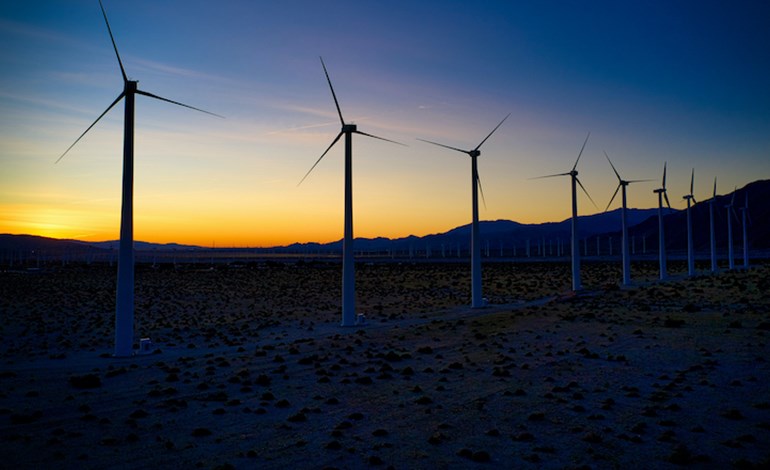In Short : The statement raises a question about whether the adoption of renewable energy is inadvertently leading to an increased reliance on fossil fuels. This inquiry could stem from concerns or discussions about the dynamics between renewable and traditional energy sources, potential challenges in grid integration, or fluctuations in energy demand and supply patterns as renewable technologies are integrated into existing energy systems. Evaluating the full impact of renewable energy adoption on overall energy reliance involves considering various factors and the complex interplay within the energy landscape.
In Detail :
Renewables such as wind and solar are intermittent and largely unpredictable energy sources, with rapid swings in output from one minute to the next. This creates major challenges for operators of the nation’s electricity grid, because supply must equal demand, and the supply “curve” in a given area never tracks the output from intermittent renewable sources. As a result, the more that intermittent solar and wind capacity is deployed to an electricity grid, the more of what’s called “dispatchable” capacity needs to be deployed to stabilize the grid to meet demand.
What this means, ironically, is that the rush to deploy solar and wind is locking us out of the one energy source that could actually achieve a zero-emissions grid, namely nuclear, and locking us into fossil fuel sources of electricity generation such as natural gas.
“Dispatchable” capacity refers to power plants that can quickly ramp up and ramp down as needed. This means simple-cycle combustion-turbine power plants such as “intermediate” and “peaker” natural gas-powered generators, and (in the developing world) power plants fired by heavy fuel oil.
“Dispatchable” power does not include power from steam electrical generators, because the boilers used to make the steam that propels their turbines take too long to heat up and cool down. Steam electrical generators, such as large low-carbon combined-cycle natural gas plants and zero-carbon nuclear plants, are instead used as “baseload” generators; “baseload” refers to that portion of demand that always needs to be satisfied around the clock.
At a joint hearing of federal regulators recently, Matt Lauby, the chief engineer of the North American Electric Reliability Corporation (a not-for-profit regulatory authority that oversees power generation and distribution in the U.S. and Canada), argued that nuclear energy can help stabilize the electricity grid as increasing wind and solar capacity is deployed. But this is highly misleading. Some of the most advanced nuclear reactors include new electricity storage technologies that could in theory help them be more responsive to variable demand, but as a general rule, nuclear cannot be counted upon as dispatchable power.
Hence, the inordinate reliance on solar and wind is arguably moving us away from a zero-emissions grid. As the developed world proceeds in its increasingly heedless transition to clean energy, so much intermittent solar and wind capacity is being deployed to the grid in places like California that it is displacing reliable baseload generation.
People are only just waking up to the deep irony. Displacing baseload generation with intermittent solar and wind requires grid operators to replace baseload generation with dispatchable sources of power to stabilize the grid. In practice, this means replacing low-carbon combined-cycle natural gas plants and zero-carbon nuclear plants with more pollution-intensive, carbon-intensive and inefficient intermediate and “peaker” natural gas plants.
Utility-scale batteries are advancing in storage capacity and efficiency, potentially mitigating the intermittency of renewables and reducing the reliance on natural gas for peaking power. But these can only marginally flatten the supply curve, and only for a few hours. They can’t store solar and wind energy from Monday so that you can use it on Wednesday.
“Storage right now is about four hours per lithium battery,” said Lauby. “But I’m not worried about 24 hours. I’m worried about five days of extreme weather.”
Environmentalists are often their own worst enemies. They insist that clean energy is necessary to save the planet but are responsible for virtually all of the major obstacles to a clean energy transition. They welcome the Biden Environmental Protection Agency’s mandates on electric vehicles and power plants, though those rules will punish the most efficient power plants and cause utilities to switch to less-efficient and more carbon-intensive sources of electricity generation. They celebrate the Biden’s administration’s decision to stop granting new liquefied natural gas export licenses, though this will make developing countries poorer and more reliant on coal and will turn Europeans increasingly against the very idea of a clean energy transition.
If environmentalists were serious about eliminating carbon emissions from the electricity grid, they would be pushing for a massive expansion in nuclear power, so that demand is satisfied as much as possible from nuclear baseload generation. Instead, in their rush to deploy solar and wind, they are diminishing the rationale for baseload generation, thereby making grid management all about stabilizing the intermittency of solar and wind, rather than assuring reliance on the most dependable, efficient, and least carbon-intensive sources.
Writing in Energy Central in 2013, research scientist Schalk Cloete noted the catastrophic impact that Germany’s renewables-heavy Energiewende (“energy transition”) would have on utilities:
Simply put, climate activists aren’t just putting all their eggs in one basket. It’s the wrong basket, even for the goal of net-zero carbon emissions electricity. They will be dismayed at how much fossil fuel power they find stuck inside of it.

